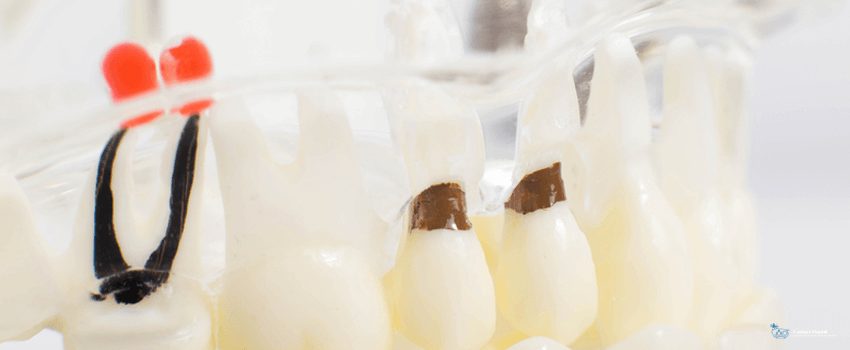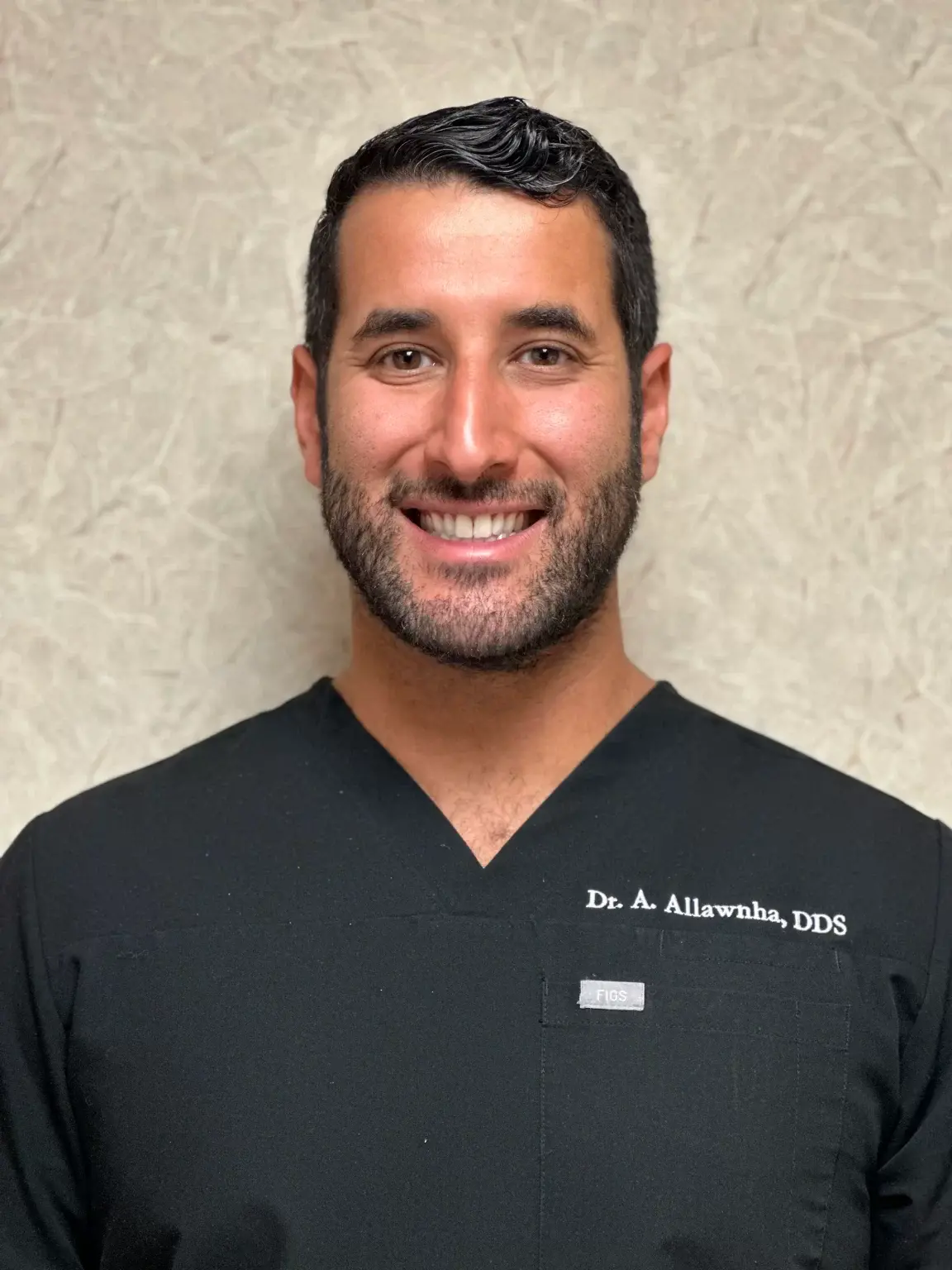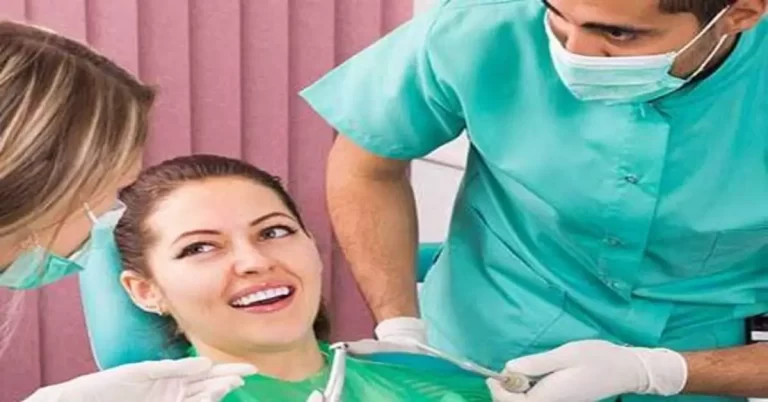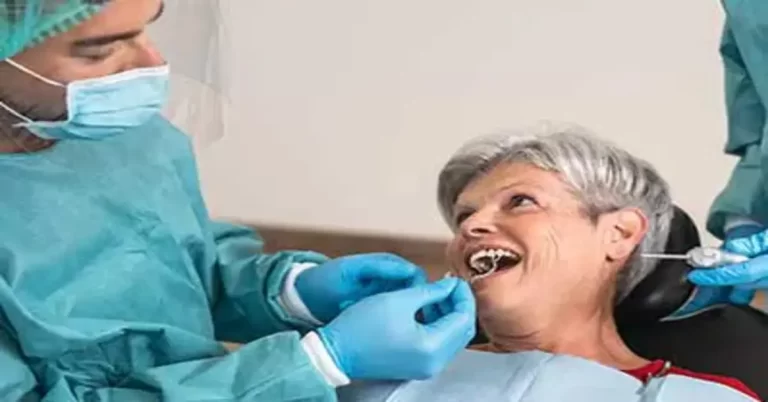Pulpitis, an inflammation of the dental pulp tissue, can cause severe pain in your teeth. It’s a common dental problem where at least 1 in 4 adults between 20 and 65 have cavities due to pulpitis. Fortunately, it’s easy to reverse and treat if it’s found early. This guide will help you learn more about pulpitis if you have been diagnosed or are concerned if you have it.
Let’s define pulpitis and learn about its symptoms, causes, and treatments.
What is Pulpitis?
According to the American Dental Association, your tooth comprises four layers: enamel, dentin, cementum, and pulp. The enamel is the outermost layer of your teeth. It’s the hardest of all four, and it protects your teeth. The dentin layer is the middle layer supporting the enamel. It’s darker colored than enamel, which can show through the enamel when worn down and make the tooth look more yellow. The cementum is a hard layer covering the tooth’s roots, attaching it to the periodontal ligament.
The pulp is the innermost layer of your tooth that contains the tooth’s nerves and blood supply. It also nourishes the harder upper layers to keep your teeth healthy. Pulpitis occurs when this layer is infected or inflamed.
You can differentiate pulpitis based on its reversibility. Irreversible pulpitis occurs when the inflammation or infection is past the point your dentist can save the affected tooth; reversible pulpitis is the opposite. Catching pulpitis in its early stages makes it easier to treat and reverse.
Another way to categorize pulpitis is by pain duration. Acute pulpitis causes sudden, intense pain, while chronic pulpitis results in duller but more persistent pain.
What Causes Pulpitis?
Pulp infection and inflammation can occur through various causes. Deep cavities are the most common cause of dental pulp inflammation because it exposes the pulp to bacteria. Other ways in which dental pulpitis occurs include:
- Head or mouth injury
- Fractures, cracks, or chips on the tooth that expose the pulp layer
- Using an abrasive toothpaste
- Bad bites
- Aggressive brushing techniques
- Teeth grinding
- Tooth wear and tear
Some dental treatments can cause pulpitis. It may happen from:
- Exposure of teeth to extreme temperatures when setting a filling material
- The heat from teeth polishing
- Pulp exposure during a filling procedure
- Crown fitting
Contact your dentist for further treatment and evaluation if you think your pulp infection or inflammation is due to dental treatments.
How is Pulpitis Diagnosed?
Aside from using digital X-rays to check for signs of infection and defects, dentists mainly diagnose pulpitis by assessing your tooth’s sensitivity. Some of the sensitivity tests they may conduct are:
Heat or Cold Test
A temperature test helps determine if your pulpitis is reversible or not. This test involves touching a hot or cold object to your tooth; sensitivity that lasts longer than a few seconds means you have irreversible pulpitis. Not feeling anything indicates your tooth’s pulp is dead.
Electric Pulp Testing
Electric pulp testing determines if your pulp is healthy or has started to die. Dentists use an instrument that applies a small electric pulse to the tooth. You’ll feel it if you have healthy tooth pulp. You won’t feel it if your tooth’s pulp is dead.
Tooth Tapping
Dentists also check for sensitivity by tapping the affected tooth gently. Patients with irreversible pulpitis will usually feel pain.
Pulpitis Symptoms to Watch Out For
Toothache and sensitivity are the two most common pulpitis symptoms. The severity of inflammation will affect the level of pain you feel.
Symptoms of reversible pulpitis include:
- Tapping the affected tooth doesn’t result in pain
- No heat sensitivity
- Quickly fading sensitivity to sweets or colds.
Meanwhile, irreversible pulpitis symptoms include:
- Pain when tapping the affected tooth
- Sensitivity to heat, cold, or sweets that lasts longer than a few seconds
- Sharp, throbbing, or aching pain
You might not experience sensitivity to heat or cold if the affected tooth’s pulp has started to die. You may not also feel pain when your dentist taps on your tooth.
How to Treat Pulpitis
Each type of tooth pulpitis has many possible treatment options. Your dentist will perform some tests to determine if they can still save your tooth using reversible pulpitis therapy or extract it.
Reversible Pulpitis Treatment
Seeking early treatment for reversible pulpitis allows your dentist to save your teeth. Treatments focus on preventing pulp exposure by filling cavities or placing crowns on a cracked tooth.
Irreversible Pulpitis Treatment
It’s impossible to recover or restore a tooth with pulp that has already died. But, saving the affected tooth is still possible. After your dentist diagnoses irreversible pulpitis, they can perform a root canal procedure to remove any remaining pulp tissue. They clean the inside of the tooth, fill it, then seal the tooth with a crown to help it feel and look normal.
Your dentist may recommend extracting your tooth if the damage is too extensive to repair with root canal treatment. You can replace your missing teeth with implants, dentures, or bridges.
Irreversible pulpitis is painful. You can get pulpitis pain relief when your dentist treats your pulpitis; the pain will stop once the infection and inflammation stop. Your dentist may also recommend painkillers and other over-the-counter medications. Always ask your dentist for advice during treatment.
Antibiotics
Some dentists may prescribe antibiotics to treat irreversible pulpitis, relieve pain, and reduce inflammation. However, there is no evidence supporting this idea. Talk to your dentist if you have concerns about using antibiotics for pulpitis.
Leaving tooth pulpitis untreated can lead to a tooth abscess where the tooth’s root around the gums becomes infected. Your dentist will use antibiotics in conjunction with a more extensive treatment plan to remove the infection or extract the affected tooth.
How to Prevent Pulpitis
Good oral hygiene is important in preventing pulpitis. This includes:
- Brushing teeth two times daily
- Flossing
- Routine checkups and cleanings from your dentist
- Using a night guard at night to protect your teeth when teeth grinding
Let your dentist know if you feel any pain or sensitivity.
Key Takeaway
Irreversible and reversible pulpitis are the two main types of pulpitis, both caused by the inflammation of the pulp. Pulpitis pain may also be categorized as acute or chronic.
A simple filling is usually enough to treat reversible pulpitis caught early. Otherwise, the pulp may die and make the problem irreversible. The only treatment options left are tooth extraction or root canal.
Regular visits to the dentist and good oral hygiene are the best ways to prevent pulpitis.
Keep pulpitis at bay with Century Dental.
Pulpitis is a fairly unpleasant condition, so always remember that prevention is always better than cure. Our dentist in Madeira Beach, FL, provides preventive procedures that keep dental problems at bay. They also perform root canals and other tooth replacements to keep your mouth healthy and your smile bright. Contact us if you experience pulpitis symptoms to keep it from worsening. Take your first steps to oral wellness and keep your teeth and gums healthy for years.





